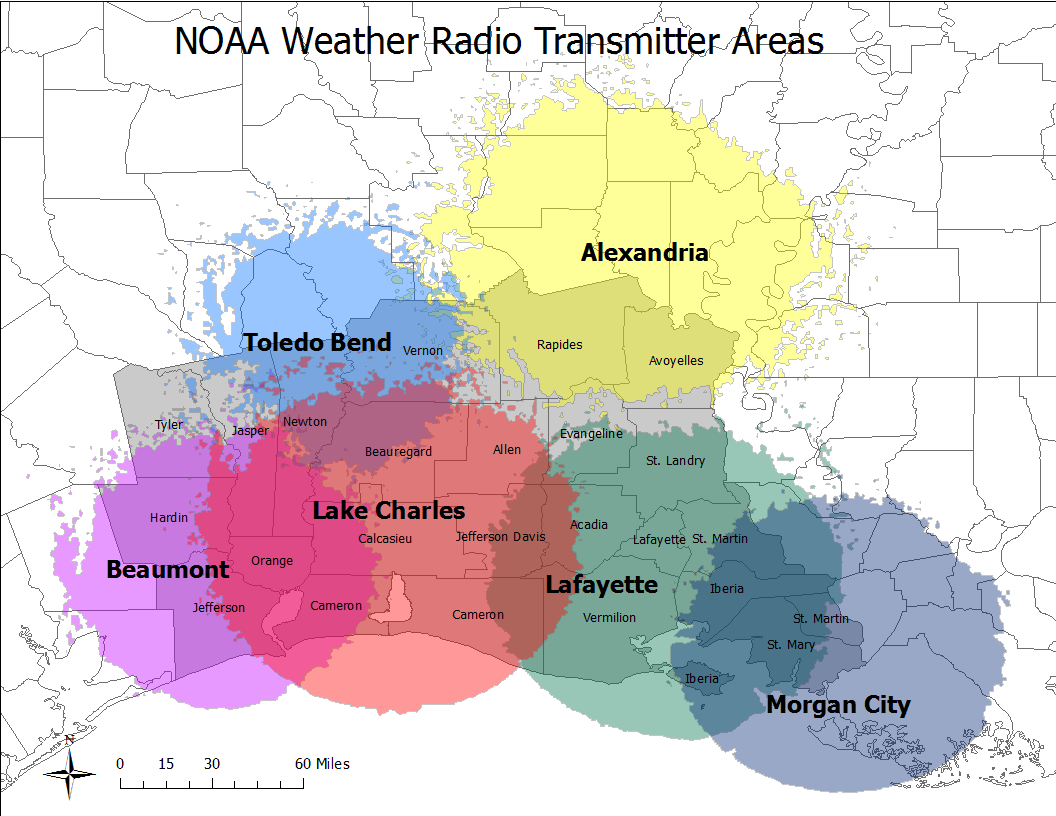NOAA Weather Radio
NOAA Weather Radio (NWR) is a unique service provided by the federal government that began in the 1960's. It provides a continuous 24 hours a day, 7 days a week broadcast of the latest weather information. In 1975, the main function of NWR was defined, as an executive order of the White House made it the only government operated radio system that could directly warn the public of impending hazardous conditions. In addition, routine weather information (including public, marine and other specialized forecasts; hourly weather observations; river and tropical information) is transmitted. These broadcasts, which originate directly from the local National Weather Service Office, can be found on specially allocated frequencies between 162.400 MHz and 162.550 MHz. This means that a special radio receiver is necessary to pick up the broadcast. These radios are sold by many retail outlets and can cost less than $20 in their basic form. Some CB radios, scanners, short wave and AM/FM radios are now also capable of picking up these broadcasts. Currently there are more than 450 NWR stations located throughout the 50 states, Puerto Rico, the U.S. Virgin Islands and the U.S. Pacific Territories. Each of these stations can reach an audience out to 40 miles from the transmitter site, while some are rebroadcast over local cable TV and local government owned AM radio stations.
Information on Buying A Weather Radio
NWR Stations under the responsibility of the National Weather Service Office in Lake Charles
(with approximate transmission areas in circles).

(Click on the map for more detailed information on each transmitter)
The primary goal of the National Weather Service is to "Protect Life and Property." To help achieve this goal, a special alert tone is sounded over NOAA Weather Radio to warn listeners of dangerous situations. The alert tone is transmitted over the NWR in which its listening area is affected by the warning or watch. The tone is sent at a level of 1050 Hz and will set off an alarm on those weather radio receivers that have a "tone alert" feature. This enables the listener to find out about the impending hazard immediately so they can take the appropriate action to protect life and property. Radios which have the alert feature built in usually cost $30 to $40 and are available at most electronics stores.
In order to better serve the public, a second alert feature has been developed to be transmitted by NOAA Weather Radio. This feature is known as Specific Area Message Encoder, or SAME. The SAME technology works in conjunction with the new Emergency Alert System (EAS) now in operation to allow consumers to choose which warnings and watches and for what counties or parishes in their area they want to be alerted for. For example, the emergency manager of Calcasieu Parish can set up the SAME receiver to alert only for a dangerous weather situation that will affect Calcasieu Parish. How this works is 4 special tone bursts are sent in a 3 second period over NWR. These electronic bursts have special coded messages for the type of hazard, the area affected, and the time which it will last. In order to receive this message, consumers will need to have a weather radio with the SAME receiver built into it and program the radio using special codes to define the areas to be alerted for. These new radios are sold mainly by companies specializing in electronics or radio equipment at a cost of about $60.
Click here for a list of codes for parishes and counties within our NWR transmitters' listening areas. To find out SAME codes for parishes or counties elsewhere in the U.S., call the special SAME Hot Line number at 1-888-NWR-SAME. Or you can click the following link: SAME Codes for Anywhere in the United States
Weekly Weather Radio Test: The alert features of the NOAA Weather radio are tested each Wednesday morning around 11:00 AM. During this time, a properly programmed weather radio will display a test message confirming that your weather radio is in proper working order. The test message will remain visible for several hours after the test is administered to allow radio owners who are unavailable at the time of the test to confirm that their radio is functioning properly. If severe or hazardous weather is expected, the weekly radio test will be postponed until the next available fair weather day.
That voice you hear on NWR is the voice of the new NOAA Weather Radio 2000 program. Unlike the former human-interactive NWR, the NWS instituted a PC-based system called the Console Replacement System (CRS). This system is able to automatically receive products issued by our office and air them on NWR immediately, instead of taking a minute or two for a human to record the product and then place it into the broadcast cycle. This is especially important during severe weather when every second counts. The original computer-sounding voice, which was included in the software when the system was developed, will be replaced in the near future by a pair of more human-sounding voices...allowing the NWR program to sound more natural. For more information on CRS, please see the NWS's CRS FAQ page.